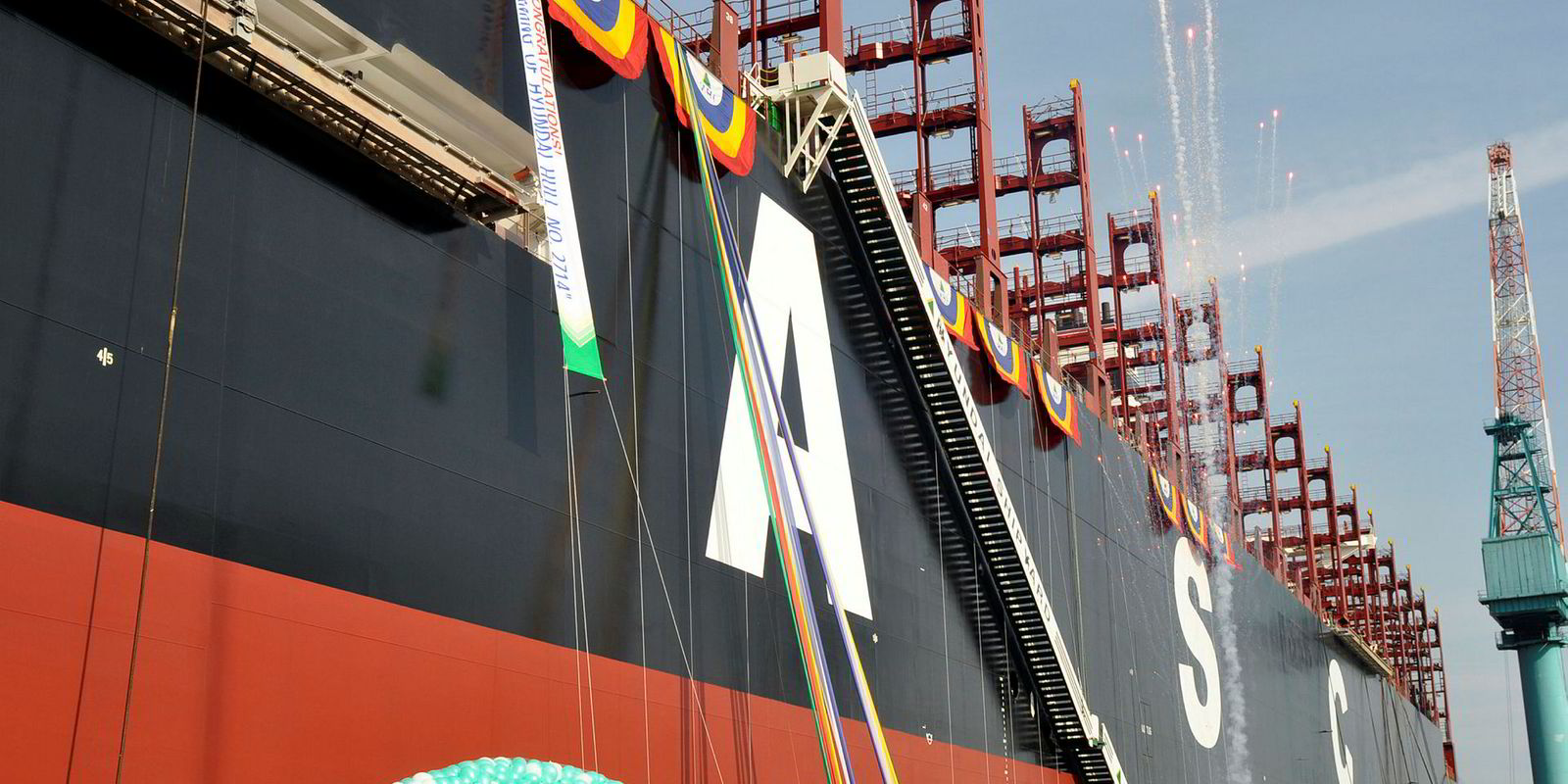German line Hapag-Lloyd has booked in what it claims is the first conversion of a large boxship to run on LNG.
Retrofitting of the 15,000-teu Sajir (built 2014) will take place at Hudong Hondhoa Shipbuilding's Shanghai yard Huarun Dadong Dockyard in China after a deal was signed at the end of last week.
The pilot project paves the way for other large vessels to follow suit, the company said, making emissions reductions of between 15% and 30% possible.
The vessel's engine will also be able to use low-sulphur fuel oil (LSFO) as a back-up.
“By converting the Sajir, we will be the first shipping company in the world to retrofit a containership of this size to LNG propulsion,” said Richard von Berlepsch, managing director of fleet management at Hapag-Lloyd.
“By carrying out this unprecedented pilot, we hope to learn for the future and to pave the way for large ships to be retrofitted to use this alternative fuel.”
Sulphur dioxide and particulate matter could be cut by more than 90% with the retrofitting, which will probably take around three months.
More ships ready to convert
Sajir is one of the 17 vessels in the fleet that were originally designed to be LNG-ready after being acquired through the UASC takeover in 2017.
These have been designed so that LNG bunker tanks and associated pipework can be easily retrofitted to allow them to use gas as a fuel.
Sajir is set up with a bay that can accommodate a 6,500-cbm LNG bunker tank, which is likely to be fitted as a membrane-type unit.
TradeWinds reported last year that Hapag was one of the few shipowners to have gone public with plans to deploy and trial all three options for making its vessels compliant for 2020: LSFO, LNG and scrubbers.
The German containership owner and operator boasts a fleet of 220 ships, of which around 100 are owned vessels that are its focus for 2020 compliance.
It has kicked off a pilot project to retrofit two vessels with scrubbers, starting with its 13,177-teu Hamburg Express (built 2012), and later upped the figure to 10 vessels.





